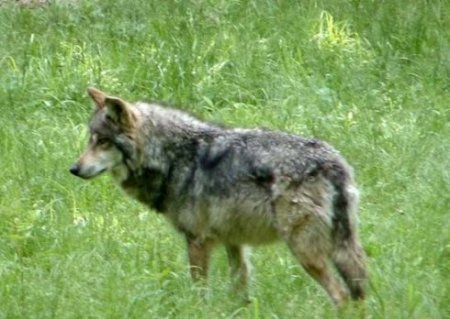New in the Press: Access to details of wolf-killed cattle denied
by Howard Fischer
Capitol Media Services
 Environmental groups are not entitled to specific locations of where wolves have killed cattle, the Ninth Circuit Court of Appeals has ruled.
Environmental groups are not entitled to specific locations of where wolves have killed cattle, the Ninth Circuit Court of Appeals has ruled.
In a unanimous decision, the court said the specific data sought by the organizations is exempt from disclosure under the federal Freedom of Information Act. The judge said that means the U.S. Department of Agriculture, which has the information, can keep it secret.
The ruling was met with disappointment from members of the groups, who said the data were needed to provide crucial information they believe ultimately would help preserve Mexican wolves in Arizona and New Mexico.
Wolves were reintroduced to eastern Arizona and western New Mexico in 1998. But efforts to preserve them in the wilderness have run into the concerns of ranchers.
What happens, according to Michael Robinson, a conservation advocate for the Center for Biological Diversity, is that wolves that are linked to cattle deaths are relocated or shot. He said the last census at the beginning of this year found only 42 animals in the wild, a 19 percent decline from the prior year.
Much of that, the groups argued, is because of government action.
In 2007, for example, they said 19 wolves were removed from the wild. That, they said, left a year-end population of just 52 wolves and three breeding pairs anywhere in the world.
Eva Sargent, director of southwest programs for the Defenders of Wildlife, said the data sought would help her organization work with ranchers to prevent depredation of cattle by wolves.
For example, she said ranchers can put extra cowboys into the field.
“Wolves are generally discouraged by humans’ presence,” Sargent said. She said cattle could be moved away or electric fencing could be installed.
And there is a way to have alarms go off when a wolf with a radio tracking collar approaches the fence to scare the animal off, she added.
“In order to know where to center those programs, we need to know where hot spots of depredation are,” Sargent said. “And they usually are hot spots, a particular ranch, a particular area.”
Matt Kenna, the attorney who represented the environmental groups, said there were other uses for the information.
He said that most of the losses to ranchers were on leased public lands and not on private property.
“¦
In 2006, the groups filed a public-records request for details of the wolf-removal program. What was not released was the specific location of the removals as computed by global-positioning system coordinates.
U.S. District Court Judge John Roll ruled last year that the groups were entitled to the information. But the appellate court said that conclusion was wrong.
Judge Pamela Rymer, writing for the court, judges said the Freedom of Information Act says that making information public has an exception for data specifically exempt from disclosure in other statutes. And in this case, she said, the USDA is prohibited from releasing geospatial information it maintains about agricultural operations.
Rymer said agricultural operations include livestock. The wolf-removal program falls under that, the judge said, because the information concerns depredations that limit the ranchers’ livestock production.
And Rymer said the fact that many of these sites are on public grazing lands leased by ranchers, rather than on their private property, did not change that exemption.
The case is Center for Biological Diversity v. U.S. Department of Agriculture 09-017233.
To read the full article, published in the Arizona Business Gazette on December 16, 2010, click here.
To learn what you can do to help Mexican wolves, click here.



